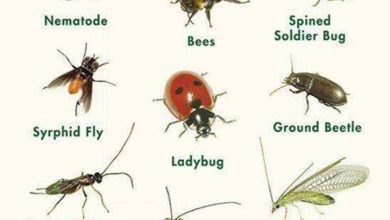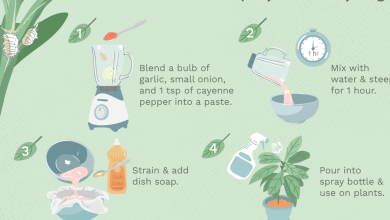Cabrahigo: [Characteristics, Cultivation, Care, Pests and Diseases]
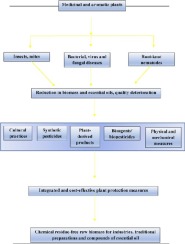
Important points when sowing Cabrahigo
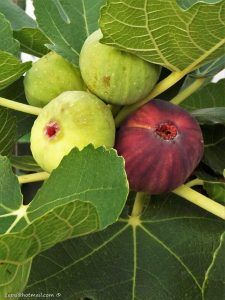 When? At the beginning of winter this tree of great nobility must be cultivated
When? At the beginning of winter this tree of great nobility must be cultivated- Where? It can be planted in large, sunny gardens, directly and in pots.
- How do we prepare the land? A nutrient-rich substrate containing sand and mulch is important to avoid excess irrigation water.
- How do we sow? Inside a pot, the plant should be buried in the sunniest place in the garden to protect the tree from winter frost. In places with mild winters it is not necessary.
- How do we pay? A good liquid fertilizer rich in potassium should be applied weekly when the fruits start to grow.
- When do we harvest? They ripen in late summer and early fall, when their fruits have fallen to the ground or are ready to be removed from the branches.
- Ideal temperature? Likes Mediterranean regions with good sun and mild winters.
- How do we water? Irrigation water should only be added when the substrate has dried, once a week and 2 if there is a lot of summer heat.
- Diseases and pests? With Neem oil spread on its leaves, the mold that covers the plant when it is attacked by a highly polluting fungus is combated.
What is caprifig?
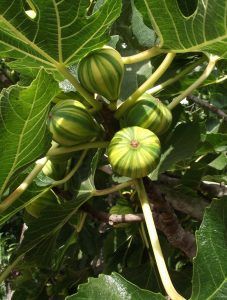 Originally from Turkey, the Cabrahigo is a male variety of Ficus carica. It has a pollen destined to pollinate the female fig trees, in order to fertilize them with the aim of guaranteeing the harvest of the fruit and preventing it from being lost when it falls from the tree.
Originally from Turkey, the Cabrahigo is a male variety of Ficus carica. It has a pollen destined to pollinate the female fig trees, in order to fertilize them with the aim of guaranteeing the harvest of the fruit and preventing it from being lost when it falls from the tree.
This method of fertilization of the Cabrahigo is known worldwide as one of the most primitive forms of planting, with support in staminate flowers. They are capable of producing three generations of sycones each year.
Caprifigs produce male flowers. And inside there is a hymenopteran insect encysted in the ovary of the flowers. When it matures, it leaves the same bathed in pollen that will fertilize the female flowers.
Fig trees usually have smooth gray bark, wrinkled deciduous leaves that are light green on the underside and much darker on the upper side. A fig tree has female flowers and will always need a male to be fertilized.
That is the Cabrahigo. They live next to the female fig trees, in full sunlight. They are essential in the harvest of figs, a delicious fruit that does not prosper in the case of the best-known variety, the Sari Lop type smyrna, because it needs the pollen generated by caprifigs, thus becoming a kind of stallion.
Thanks to this unique fertilization process, caprifigs help maintain the world production of the Ficus elastica or Gomero. It is part of the genus of figs, mostly generated in Turkey, leader with more than 260 thousand tons harvested per year.
Its global production is concentrated mainly in the eastern Mediterranean region, as well as in Mexico, after the American colonization. In addition to Turkey, they are produced on a large scale in Algeria, Morocco, Greece, Italy and Spain.
function of the sycones
The sycones are inflorescences of the genus Ficus, classified as compound and multiple fruits of the Higueras, deciduous trees that produce the breval figs. The following symptoms are produced:
moms
These fruits grow on the branches during the preceding year. They have a rounded shape and remain on the tree until the arrival of the following spring, after enduring the winter stoically. They contain an insect responsible for carrying out pollination.
Prohibits
They form in the axils of the youngest leaves of the Higuera tree and exhibit an elongated shape. This fruit ripens at the beginning of the summer season, the hottest.
![]() Profigs are the most used protagonists in this incredible unique fertilization process through a caprification method.
Profigs are the most used protagonists in this incredible unique fertilization process through a caprification method.
Executed during the laying of the figs and their insects that live inside, in the branches of the female fig trees in order to consummate pollination.
suckers
They grow throughout the summer and are always located around the ends of the tree’s annual branches. They are not eaten, but they are very useful because a small wasp lives comfortably inside, which provides efficient services in the pollination process, but also in calling fruit set.
Where should we plant it?
They adapt perfectly well to wide and very sunny spaces in gardens located in areas with mild winters.
And they can grow in pots that are buried to protect their roots from low temperatures, when there are frosts and sudden changes in temperature.
When should caprifig be grown?
It is a very generous tree that produces fruit from the base of its branches, a year after its cultivation began in ideal conditions.
Actually, it is not difficult to grow a Ficus carica. Can be planted in early winter
How do we prepare the land?
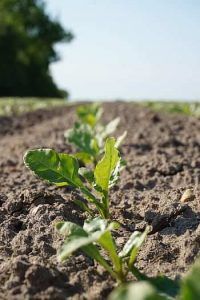 They need very well drained clay soils, where the irrigation water circulates quickly. Does not support acid soils.
They need very well drained clay soils, where the irrigation water circulates quickly. Does not support acid soils.
The plant must also be fertilized once a week, at the time of fruit growth. This is very important to help you boost your productive energy.
A good brand of high potassium liquid fertilizer is best, which should be sprayed around the soil.
In spring and summer, take advantage of fertilizing it weekly if it is in a pot. The excess can affect it and cause damage to the harvest. And this task should always be executed only when the fruits are growing in this period.
Some recommend the use of the same liquid fertilizers used for growing tomatoes. A mix of 8-8-8 and 10-10-10 fertilizers is best for fig trees. When fruit production ceases, fertilization should also be discontinued.
How to plant a caprifig step by step?
Growing a male Ficus carica tree in the garden is not so difficult if the following steps are followed:
- Choose the sunniest spot in the garden, because it will always need direct light. It must not be close to any buildings, buildings or other nearby trees or bushes. The area must be very clear.
- The environmental temperature is very important, because below -12ºC this noble tree suffers a lot.
- Then look for a large plastic pot to protect it from frost if your house is in a place of severe winter.
- Plant the fig tree in a hole in the garden, where the container where it remains since you brought it from the store fits perfectly well.
- Carefully remove the plant from the original plastic pot, freeing it with circular movements and inserting it into the hole. Fill with fertilized soil mixed with sand, so that all the roots are covered. Compact with the help of your hands.
- Above ground, mulch around the entire base of the newly planted plant. Good compost always helps the surrounding soil absorb water.
- After 3-5 years the plant should be transplanted if it was planted in a container.
- The procedure is simple, because you need to remove a third of the potted soil. The tree is removed with great skill so as not to damage it and the excess roots are cut.
- It is put into the new pot, so that it has more space, the remaining soil that it needs is added and it is compacted with the help of the hands.
- The irrigation water must be generous, but with the precaution that it does not flood the substrate.
What care does the caprifig need?
Lightning
Although they must spend most of their time in full sunlight, in the hottest periods, it is necessary that they are not exposed to solar radiation for a long time.
When transplanting this miraculous plant, it is convenient to keep it well protected under shade, but with sufficient lighting, so that it recovers quickly and is ready to carry out its work.
Temperature
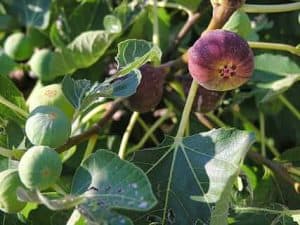 In winter, even more so if it is very severe, you have to protect it from frost and low temperatures.
In winter, even more so if it is very severe, you have to protect it from frost and low temperatures.
It will lose most of its plant cover, its leaves, but then it will re-emerge in the spring, when the buds come out of dormancy.
In the autumn, it is necessary to place it in a cool place, calculated between 5 to 8ºC, so that it recovers its full potential.
When it comes to areas with very severe winters, it is best to grow them in cold outdoor greenhouses, because they will still have to be taken outdoors for their full growth and development, just when spring ends.
Otherwise, the Cabrahigo should be kept outdoors, in every season of the year, in areas where winter is not so implacable.
Irrigation
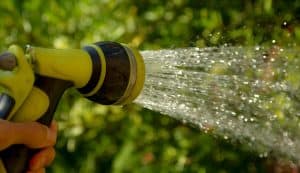 Irrigation water should be added only when the substrate has completely dried. It is a plant intolerant to soil waterlogging.
Irrigation water should be added only when the substrate has completely dried. It is a plant intolerant to soil waterlogging.
Check the soil at least once a week to make sure how much water the plant needs.
Generally, the equivalent of one gallon or 4 liters of water should be used at each watering, to be poured onto the soil around the plant.
If yellowish leaves are observed, it is an indication that it needs water, so you should water more frequently. Twice a week will suffice. If the leaves return to their natural color then you have overcome any difficulties associated with lack of nutrients and lack of hydration.
Pruning
It should be pruned at the end of winter, at the end of the frosts and before their shoots begin to appear. And also in February it works fine.
bird protection
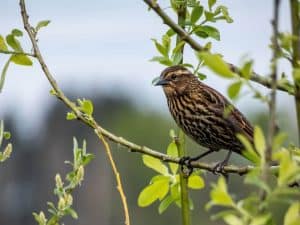 When the fruits begin to grow and especially when they are ripe, they will be attacked by birds eager to taste their sweet pulp.
When the fruits begin to grow and especially when they are ripe, they will be attacked by birds eager to taste their sweet pulp.
You will then have to protect the tree by covering it with a mesh or net that you must tie very carefully around the trunk.
Every time you remove a group of already ripe figs, you will have to place the net again to prevent gluttonous birds from approaching and harvesting them.
What pests and diseases attack the caprifig?
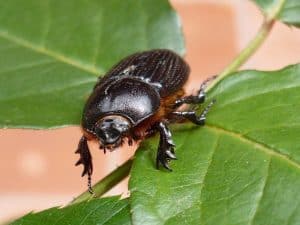 One of the most common conditions that these trees suffer from is the appearance of mold on their leaves.
One of the most common conditions that these trees suffer from is the appearance of mold on their leaves.
This disease must be combated by applying Neem oil on the affected parts and at the root. This fungus causes the leaves to turn yellow until they dry out and die.
All dead leaves should also be removed, but they should be thrown in the trash and burned so that the fungus does not spread to any other plants in the garden.
Those branches that change color, those that are stained with pink spots, should also be cut. They also suffer attacks by worms and beetles. Bait traps should be set before the ripening season to catch them.
When they are imprisoned, an insecticide containing the ingredient malathion dissolved in sugar and water is applied, following the manufacturer’s instructions.
The cochineal can also do its thing, it is eliminated with the help of a solution prepared with methylated spirits, dishwasher soap dissolved in hot water, spraying once a week for a month.
How long does the caprifig live?
It is associated with a life time similar to that of the fig, which can range from 30 to 40 years.
How long does caprifig take to grow?
It is a fast growing tree that will show its adult version in less than 10 years.
How long does it take to produce fruit?
It does not produce fruit because it is a male species that is only used for pollination of female fig plants.
Can it be grown in a pot?
Yes, it can be planted in a pot, noting that its floral production will not be as numerous.
Should the caprifig be pollinated to obtain fruit?
The caprifig does not bear fruit, but it does provide pollen so that the fig plant can produce them.
This process is carried out through the visit of pollinating insects that are in charge of the work.
How cold can the caprifig tolerate?
It is capable of tolerating cold and even certain frosts when the roots are protected from freezing by padding. In general, not less than -12°C.
How many caprifigs can be planted per hectare?
It is estimated that the sowing of caprifigs per hectare can cover between 100 and 150 specimens.
However, this is not a common practice but they are usually alternated with female fig plants, depending on the pollination needs.
What type of fertilizer does caprifig need?
Fertilization is based on fertilizers for organic green plants.
In case of using mineral fertilizers, they will be of a balanced proportion, since the nutritional needs of this type of ficus are not so high.
How much heat and/or drought can the caprifig tolerate?
It has no problems with heat or drought because it is a Mediterranean climate plant.

![Photo of [7 Tips] For the Perfect Care of your Garden](https://www.complete-gardening.com/wp-content/uploads/2022/08/7-tips-for-the-perfect-care-of-your-garden-390x220.jpg)
